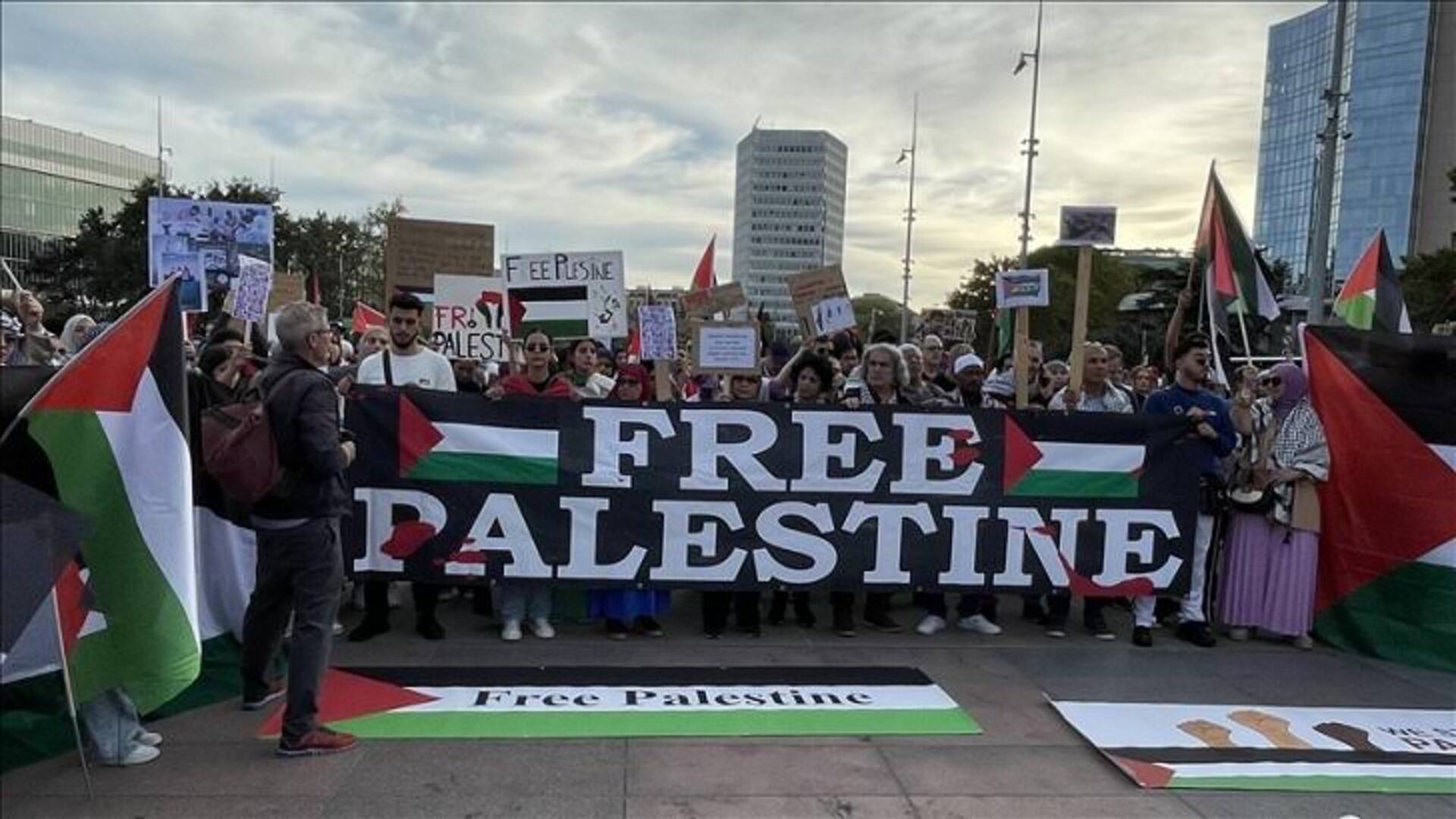
The Ottoman Empire, which lasted from 1299 to 1922, is known as an influential power in the history of the Muslim world. This empire became a global empire starting with the rise of Turkic tribes. Its influence extended not only to the Middle East, Europe and North Africa, but to various regions of the world. This report will analyze the Ottoman Empire’s history, administrative structure, military strategy, cultural contributions and causes of its decline.
Rise of the Ottoman Empire
Basic background
The rise of the Ottoman Empire began in 1299, when Uthman ibn Abu Talib (Uthman I) declared independence as the leader of the Ottoman Ghauz (Turkic tribe). During this period, the Byzantine Empire weakened and the Turkic tribes faced new opportunities as a result of the Mongol invasions. Osman I expanded his influence, conquering small territories and uniting various Turkic tribes to form the foundations of an empire.
The reign of Osman I
The reign of Osman I was the founding era of the empire. Under his leadership, the empire began primarily in the Bofin and Bolu regions of northwestern Turkey. He took advantage of the weakness of the Byzantine Empire to capture several important cities and began to expand the empire. His reign was short but played an important role in laying the foundations of the empire and increasing its military power.
Empire expansion and administration
Orhan Gazi’s reign
Orhan Ghazi (1319-1362) is a prominent ruler of the post-establishment era of the Ottoman Empire. His reign is considered an era of imperial expansion and administrative reform. Orhan Gazi captured various cities in the territory of the Byzantine Empire and expanded the empire. His rule established the Janissaries, the main military force of the Ottoman Empire.
Orhan Ghazi introduced new administrative structures and legal systems during his rule. These included new methods of setting currency values and collecting taxes. He also instituted various social and economic reforms, which helped in establishing internal stability and good governance in the empire.
Murad I’s reign
Murad I (1362-1389) is known for the prosperity and strengthening of the empire. During his reign the empire also expanded towards Europe. His administrative reforms included martial law and the introduction of new legal systems. Murad I strengthened the janissary forces and occupied Bulgaria and Serbia with military campaigns.
During his rule, the ‘Divshiram’ system was introduced, whereby Christian children were trained and recruited into the Janissary force. Murad I’s reign was notable for the expansion of the empire’s military power and administrative efficiency.
The reign of Bajajet I
Bajajet I (1389–1402) is known for the success of the Ottoman Empire’s military power and expansion. During his reign, the empire captured important territories of the Byzantine Empire and conducted various military campaigns. During his reign, the empire had to fight against Tamar Lenk, which changed the military and political situation of the empire.
After the fall of Bajajet I, the empire weakened somewhat. Tamar Lenok destroys the empire to some extent within her power and the empire needs to be rebuilt.
Reign of Sultan Suleiman (the Conqueror).
Beginning of Sultan Suleiman’s reign
Sultan Suleiman (1520-1566) ushered in the Golden Age of the Ottoman Empire. Under his leadership, the empire achieved significant progress in the military, administrative and cultural fields. Suleiman was known as a wise ruler and the empire reached new heights during his reign.
Military success and expansion
Suleiman Sultan expanded the empire through military strategies and campaigns. During his reign, the empire expanded widely into the Middle East, North Africa, and Europe. Suleiman conducted campaigns in various regions including the island of Malta, Budapest and Syria and established military power and dominance.
Legal reforms and administrative development
Suleiman Sultan is particularly known for legal reform and administrative development. A law code called ‘Kanunnama’ was enacted under his rule, which improved the law and judicial system of the empire. Through this legal code, transparency and efficiency are brought to the judicial system and the administrative structure is strengthened. Suleiman established a strong and stable regime through administrative and legal reforms in the empire.
Administrative structure of the empire
Administrative level
The administrative structure of the Ottoman Empire was divided into different levels. Central administration, regional administration and local administration were its main levels. In the central administration, the sultan, the vizier and various ministers were in charge. Regional administration was administered by various provincial and district chiefs. In local administration ‘Muttasarif’ and ‘Qazi’ were responsible for local governance and judicial system.
Military rule and Janissary forces
The military force of the Ottoman Empire was highly organized and strong. The Janissary army was the main military force of the empire. Members of the Janissaries were mainly recruited from among Christian children who converted to Islam and received military training to join the force. The Janissaries were well known for their military tactics and training and were instrumental in building up the empire’s military power.
Cultural arena of the Ottoman Empire
Art and architecture
Art and architecture are of immense importance in the cultural history of the Ottoman Empire. During the reign of the empire, many historical structures were built which exhibit the characteristics of Muslim architecture. Among these are the Blue Mosque and Suleymaniyah Mosque in Istanbul. These structures reveal the excellence and beauty of Ottoman architecture.
Literature and Culture
The literature and culture of the Ottoman Empire was rich and varied. The writers of the empire expressed the religious and social ideas of Islam through their literary works. The literature of Arabic, Turkish, and Persian languages combined to create a rich cultural environment. Ottoman literature and culture were influenced by mystic poets such as Jalaluddin Rumi and Fariduddin Attar.
Education and educational system
The educational system of the Ottoman Empire is one of the most important parts of history. The expansion and administrative power of the empire was also reflected in its educational system, which ranged from religious education to higher education and professional training.
Religious education
The educational system of the Ottoman Empire was centered on religious education. Islamic education was predominant, and mosques and madrasas were the main centers of religious learning. Particularly notable among the madrasas were:
Suleymaniyah Madrasa: Madrasa founded by Suleiman Sultan in Istanbul, known as a center of Islamic learning and research. Islamic law, theory, and Arabic literature were taught here.
Sari Chelebi Madrasah: Specially imparted religious and fiqh education.
Madrasah-e Quliyyah: was one of the large madrasahs, which offered a high level of Islamic research and education.
Besides, during the Ottoman Empire, religious education was also important for the common people and efforts were made to spread education among different social and religious groups.
higher education
Higher education and professional training were also prominent during the rule of the Ottoman Empire. Various colleges and institutes were imparting high quality education. Among them:
Sulaymaniyah University: It was one of the most important educational institutions in the empire. Islamic law, medicine, calculus, and other subjects of higher learning were taught here.
Eminen Madrasa: Specially imparted training in law and administration.
Science and Technology
The Ottoman Empire made significant contributions to science and technology. Scientific research and technological development were made possible by the patronage of imperial rulers. For example:
Scientific research: Ottoman scientists made important research in mathematics, astronomy, and medicine. For example, the Turkish physician and scientist Ahmed Kostu, who has researched various topics in the medical field.
Technical Schools: Institutions imparting education in various technical subjects were established, which helped in professional training and technical development.
Literature and Language
In the Ottoman Empire, special importance was given to literature and language. Literature in Arabic, Persian and Turkish languages flourished. Poetry, essays, and other literary works were published under the patronage of the Ottoman sultans.
Arabic Language: Arabic language was important for Islamic education and religious studies.
Persian Language: Persian language literature was part of various cultural activities of the empire.
Turkish Language: Turkish language literature also flourished, and it was used as the state language of the empire.
art
Ottoman iconography used to illustrate manuscripts was influenced by Persian iconography. It also had an influence on Byzantine art, manuscript painting.[citation needed] In the 15th century, the Greek academy of painters ‘Nakashan-e-Rum’ was established in Topkapi Palace. In the early part of the next century, the Persian Academy Naqashan-i-Irani was established. Artists were supported from the court of sultans or administrators. The rugs used as signatures belong to the arts. Carpet making was a thriving industry in the empire. Carpets were used for decorative purposes and religious purposes. The method of making such carpets originated among the nomads of Central Asia. This practice was widespread in Anatolian society. In addition to the floor, carpets were used on walls and entrances.
music
Ottoman classical music was an important part of the education of the Ottoman elite. Some sultans were artists and composers themselves. Sultan Selim III is one of them. His tune is still popular. Byzantine, Armenian, Arabic and Persian music influenced Ottoman music. Structurally, this music is based on a unit called Usul, which is similar to the meter of Western music.
Anatolian and Central Asian instruments such as baglama, oud etc. were used in music.
Later western musical instruments such as violin, piano started to be used. Due to the geographical and cultural differences between the capital and other places, two distinct types of music arose in the empire. These were Ottoman classical music and folk music. Different types of folk music originated in the provinces. Chief among the distinct musical regions were Balkan-Thracian Turku, Northeastern Turku, Aegean Turku, Central Anatolian Turku, Eastern Anatolian Turku, and Caucasian Turku. Some of the characteristic styles were Ottoman military bands, Roma music, belly dance, Turkish folk music.
Traditional shadow plays called Karaguz and Hajibhat were widespread throughout the empire. Its characters represented all the ethnic and social groups of that culture. A puppeteer directed it. He spoke in all the characters’ voices. Its origins are unclear, but it is thought to have originated in Egyptian or Asian traditions.
Contemporary challenges and changes
The education system faced some challenges in the late Ottoman Empire. With the decline of the empire, the need for modern education and reform was felt. In the late 19th and early 20th centuries, the process of modern education reform began, which was completed with the establishment of the Republic of Turkey.
The educational system of the Ottoman Empire was an integrated structure of religious, higher education and professional training. Through this educational system the empire developed its cultural, social and administrative power. Its scientific and technological contributions, religious education, and contributions to literature and language are considered an important chapter in history.

 Md. Ibrahim Hossain Bishal
Md. Ibrahim Hossain Bishal 























